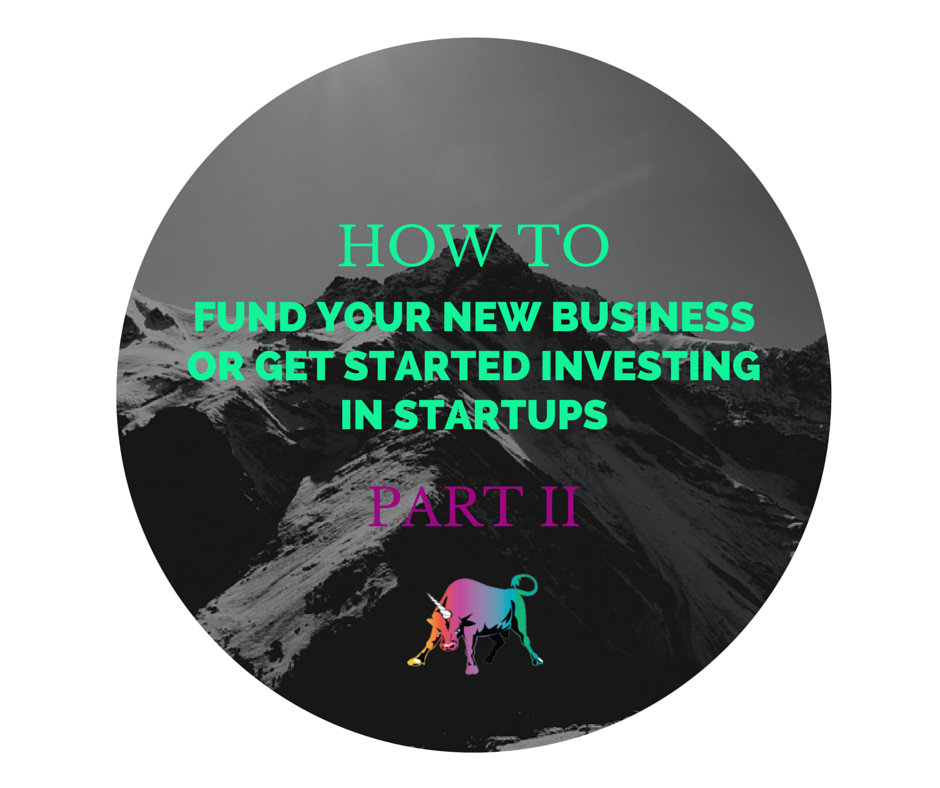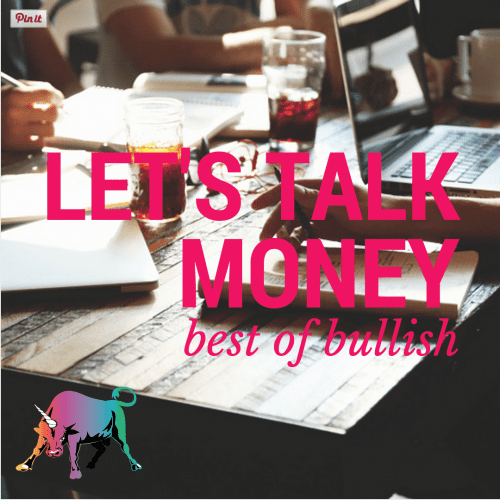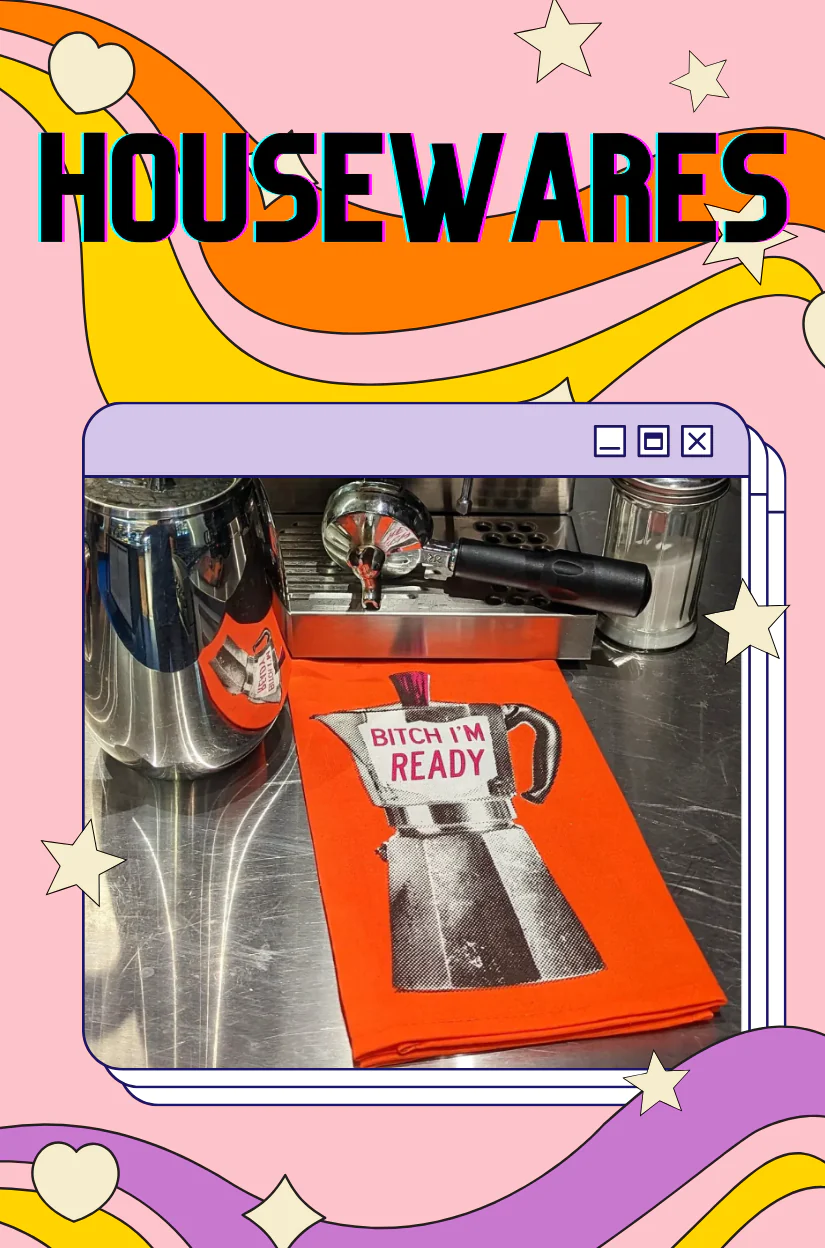This article is more than ten years old. It originally ran on a now-defunct website called The Grindstone. This post was created entirely by humans, as AI didn’t exist back then (but also: why would you want to read something no one could be bothered to write?) For more recent posts, try here.
Last week’s column, Bullish: Fund Your Business Or Get Started Investing In Startups, Part I, covered angel investing, microinvesting, and the evergreen topic of what being a lady has to do with it.
This week, we’ll discuss more ways to fund your startup or small business, and more ways that you can invest without being a millionaire (or even a tens-of-thousands-aire).
Crowdfunding
I think some people are a little too in love with the idea of crowd-verbing things (crowdsourcing, crowdfunding) because it allows them to abdicate responsibility for doing the hard work of sitting alone in a room and thinking, and then being the lone person with a vision who goes out and does things. I am suspicious of the wisdom of crowds. History of full of crowdlynchings and crowdwitchburnings.
In any case, crowds are pretty good at funding one-off artsy projects in exchange for gifts. If your business fits into this model, crowdfunding might work for you.
On the patron side, Kickstarter is the place to be a budding Medici, using small or large amounts of money to fund mostly creative projects – generally in exchange for “rewards,” not a return on investment. Support the creation of new folk-rock album with $10, you’ll probably get a free download; support it with $5,000, and the band will probably come perform at your house. From the site:
Kickstarter is a new form of commerce and patronage. In our world, the best way to inspire support is to offer people great rewards. Everyone loves limited editions, one-of-a-kinds, and fun experiences (parties, screenings, balloon rides!). Spend some time brainstorming your rewards and people will respond. No one needs another coffee mug.
Personally, I have very little interest in financially contributing to other people’s self-expression as expressed through children’s books, documentaries, and hand-knitted socks, but much of the site is also dedicated to projects like this – a new iPhone dock that the founders campaigned to raise $75,000 for, and instead raised $715,873 for, as of today.
A quick look at the project page reveals that the founders had already developed a working product (hence all the professional photos of said product) before posting on Kickstarter. Presumably, the cash was to physically produce the product. It’s not entirely clear what the company will do with its excess $640,000 – either make more iPod docks, or invent more cool shit. Either way, not only are the backers happy, most of them are receiving iPod docks in the mail – that is, Kickstarter is a great way to make your first sales for a new product.
In Bullish: Launching Your Empire While Your Youthful Mojo Is Still Sky-High, we heard from a reader who was hesitant about starting her fashion line, even though she had substantial savings.
A fashion line – something presumably one would have prototypes and attractive photos of – would be especially well-suited to a Kickstarter launch. Here is someone doing just that (gorgeous photos!), and here is a clothing line founded by a paralyzed Iraq War veteran.
My best friend Molly Crabapple raised about $25,000 on Kickstarter for an art project in which she locked herself in a hotel room for the week, covered the walls with paper, covered the paper with drawings, livestreamed the whole thing, held fabulous parties, and ultimately cut the drawings into pieces and mailed them to backers.
“A little less than half” of projects are successfully funded, and the average pledge is $71.
Bottom line? Kickstarter is not an investment opportunity, but can be a great, risk-free way to attempt to fund a creative business, especially one with a physical product that can be mailed to backers.
Ah, and one more thing – IndieGogo is a similar site, with the main difference that, on Kickstarter, projects that are not fully funded have the funding that is raised returned to the backers, whereas on IndieGogo, creators of partially-funded projects keep the funding.
Also see Crowdfunding: 5 Things You Should Know, for some caveats.
Peer-to-Peer Lending
What does a bank really do but keep some people’s money, pay them little or no interest, and loan that money out to other people for more interest? So, why not cut out the bank? Except for the part about all those laws and diversifying risk and having debit cards made in a factory somewhere.
In any case, peer-to-peer lending is a totally reasonable way to both fund a small business (via a personal loan) and to invest small or large amounts of money.
The two big peer-to-peer lending sites are Lending Club and Prosper.
Both sites allow regular people to invest in other regular people’s loans. Actually, it’s slightly more complicated; according to Prosper’s lender registration agreement, “you are not actually lending your money directly to Prosper borrowers, but are, instead, acting as an investor and making purchase commitments for Notes and purchasing Notes from Prosper that are dependent for payment on payments we receive on borrower loans.”
What this means is that, much like a tiny, well-groomed bank, you can “lend” money in increments as small as $25, but what you’ve actually done is purchase notes that can be sold on a trading platform easily accessible through Prosper itself.
So, if you decide to lend $50 to an anonymous person whose credit information is made available to you and who, for instance, listed his or her “purpose for loan” as “kitchen remodel” or “debt consolidation” or “getting my new invention produced in China,” you may have just purchased a piece of a three or five-year loan. So, if you want to cash out sooner than that, you can sell the notes to others.
I talked to Glenn Milar at Prosper, and at his suggestion visited some finance blogs and read Evaluating the Success of My Lending Club Strategies, P2P Lending vs. Stocks, and Am I Really Getting a 20% Rate of Return? (there are entire online forums dedicated entirely to peer-to-peer lending), and consequently moved $3,000 from my ING account to Prosper.
Then, I proceeded to have a bit of fun by investing $25 at a time in a variety of notes. The fun part was looking for people with cool business ideas. Again, it’s a personal lending site, so not many of the loans are for starting businesses, but there was one guy using pay-per-minute 900 numbers to offer counseling, and another person I declined to loan money to who listed her headline as “women entrepreneur” despite, I’m pretty sure, not being plural. (Also, here’s a tip: When asking for money, think of a better title for your listing than “biz.” This is like the adult equivalent of turning in your term paper written in text lingo.)
There are plenty of stats (and warnings, of course) on the Prosper site, but considering that savings accounts are paying less than 1% these days, it seemed basically impossible to do worse than that: “seasoned returns” as of the end of 2011 have yielded a 10.46% return (stats here), and those who have diversified across 100 or more notes (which would require a minimum of $2,500) have had 100% positive returns.
From a lender perspective, I went through the motions of trying to apply for a loan, and was indeed offered money quite instantly (despite, for the record, having declared bankruptcy after my company failed in 2003 – see Bullish: To Give Up or Not to Give Up and Bullish: The Career F*ckups I Made So You Don’t Have To.)
In fact, when I attempted to borrow $5,000 via Prosper, the site not only offered to lend me $5,000 at a monthly payment of $164.98 for three years (APR 14.36%) or $122 for five years (18.31% APR), but also helpfully offered options for borrowing $3,000 or $7,000, plus an offer of a $25 Amazon gift card for completing my loan listing. I have since received many emails attempting to entice me to borrow money – while you’d think the laws of supply and demand would work the other way, it appears there’s actually a shortage of borrowers (after all, they’re the ones who generate money for Prosper and the lenders by paying interest).
If you attempt to fund a business via Prosper, you are of course taking on a personal loan – it doesn’t much matter what you decide to use it for. (Milar: “The purpose of the loan is not critical from a risk perspective.”) In fact, many lenders use the site’s auto-invest feature and will never even see your “intended use” and personal statement. (I, however, absolutely chose to limit my lending to people who used proper spelling and grammar, unless they were gainfully employed in manual labor and wrote a convincing misspelled paragraph about something like combines or deep-fryers.)
Interestingly, Prosper listings have a social component – once your loan is listed, you can encourage friends and family to invest, and others can specifically search for loans based on how many friends and family lenders you’ve already attracted.
Finally, Milar made some fine points about why someone might want to take out a personal loan on Prosper to fund a business. He points out that most small businesses can’t just go to a bank because they have no history, and banks tend not to be interested and of course have tightened their credit policies in general. An employed person with a 640+ credit score is likely to qualify on Prosper and can generate a loan listing within a few minutes.
This loan listing goes up the next day and, if funded, the loan will arrive in the person’s bank account as soon as 8 days later (as opposed to much longer for many small business loans). Of course, shop around; plenty of people have also started small businesses on a credit card’s 0% APR introductory offer. One thing I like about writing Bullish is that I know that anyone who reads this far is pretty capable of reading the fine print or tracking down the information needed to proceed.
Altruistically-Minded Microlending
Okay, this part is for investors, not entrepreneurs – there are ways you can invest small amounts of money and feel pretty good about it, at least ethically speaking.
Since 2005, Kiva.org, a nonprofit, has allowed people to lend money over the Internet to entrepreneurs in the developing world, through microfinance “field partners.”
What this looks like for you is that you browse a website full of profiles that say things like, “Ignatius is 59 years old, married, and the father of three children. He runs a matatu (shared taxi) business in Bombolulu, Mombasa.” With a small loan, Ignatius will be able to expand his business, send his kids to school, and all that good stuff.
But when you choose to make a loan to Ignatius, you’re actually funding the field partner that has likely already made the loan to Ignatius; thus, your risk is substantially less, since the field partner has more of a track record of repayment than does Ignatius himself. The current repayment rate across Kiva is 98.93%. Repaid funds can be withdrawn or reinvested.
This isn’t really an “investment,” since you don’t earn interest (it’s an investment more in the “investment in our future!” sense). The field partners also don’t pay interest; the individual goatherds and seamstresses who get the money do pay interest, which keeps the organizations running.
As a result of browsing Kiva profiles, I’ve discovered that I am strangely attracted to strapping male entrepreneurs in barren former Soviet republics. (This photo of borrower Abdukarim standing in his field in Tajikistan is totally OKCupid-ready! And all he wants is a loan for onion seeds! Onion seeds!)
My next 11 months…
As I shared in Bullish: How To Whip Your Life, Finances, And Brain Into Shape For Entrepreneurship and in the annual roundup Bullish: This Year’s Most Aggressive Lady-Advice (And Bullicorns!), my plan for 2012 is to start multiple businesses that all work together synergistically.
I’ve got about fifty business ideas, collected over many years. I’m feeling pretty clever with the 40+ domain names I own. Of all my ideas, I’ve got one that I think I would need outside funding for. But again, maybe not: unless you want to invent a new and improved Large Hadron Collider, there are nearly always ways to start things smaller-scale. (Then again: Bullish: Are You Thinking Too Small?)
I’ve already gotten started on a few of these ideas, and spent an hour opening up a business bank account, which involved various bank employees who work on commission smarming around, acting like used car salesmen and trying to sell me things like merchant accounts and god knows what else. To make them simmer down, I told them my company was just going to sell things on Etsy. (Things made out of yarn. Artisanal yarn.)
More on entrepreneurship here on Bullish, of course. In the meantime, make grand plans! Get your money working, start a company, or at least keep some entrepreneurial plans in your back pocket. A woman who can go start her own damn company anytime is a woman it’s a little harder to fuck with in whatever career she chooses to pursue.












